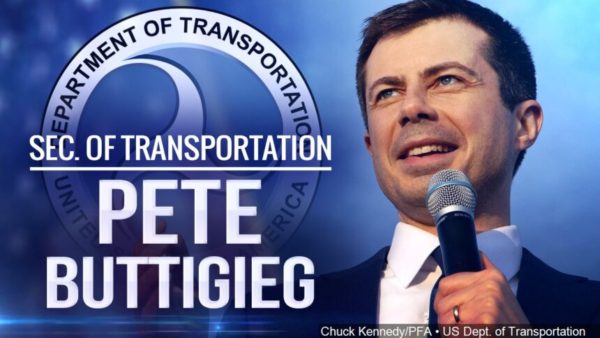

Chairman DeFazio, Ranking Member Graves, and members of the Committee, thank you for the opportunity to testify today on the Administration’s priorities for transportation infrastructure. I am grateful for the committee’s longstanding leadership on this issue and for continuing this important conversation at today’s hearing.
I believe we have – at this moment – the best chance in any of our lifetimes to make a generational investment in infrastructure that will help us meet our country’s most pressing challenges today and create a stronger future for decades to come.
Our country is now emerging from a pandemic that has taken the lives of more than 535,000 Americans. Relief is on the way thanks to the President’s American Rescue Plan passed by Congress, but there is near universal recognition that a broader recovery will require a national commitment to fix and transform America’s infrastructure.
There are good reasons why infrastructure has such strong bipartisan support. Every citizen, regardless of political affiliation, shares the need for reliable roads, railways, and air transportation. We all live with the damage that has been caused by a history of disinvestment and the resulting unmet needs that are only growing by the day.
Across the country, we face a trillion-dollar backlog of needed repairs and improvements, with hundreds of billions of dollars in good projects already in the pipeline.
We see other countries pulling ahead of us, with consequences for strategic and economic competition. By some measures, China spends more on infrastructure every year than the U.S. and Europe combined.
The infrastructure status quo is a threat to our collective future. We face an imperative to create resilient infrastructure and confront inequities that have devastated communities.
Right now, nearly 40,000 Americans die on our roads annually, millions live in communities isolated or divided by missing or misplaced infrastructure, and millions of Americans don’t have access to affordable transportation options to get around.
Before the pandemic, commuting times were getting longer for average Americans while their housing and transportation costs soared. And, without action, it will only get worse.
In the United States, transportation is the leading contributor to climate change, contributing to a pattern of extreme weather events, which takes a severe toll on our infrastructure.
Every dollar we spend rebuilding from a climate-driven disaster is a dollar we could have spent building a more competitive, modern, and resilient transportation system that produces significantly lower emissions.
It doesn’t have to be this way. Wise transportation investments are key to making the American Dream accessible for all, leading our global competitors in innovation, getting people and goods where they need to be, creating good jobs – jobs that are union or pay prevailing wages – and tackling our climate crisis.
Just like those who summoned the will to build the transcontinental railroad in the 1800s and the interstate highway system in the 1950s, we too have the opportunity now to imagine—and create—a different future for America’s transportation.
I know that expectations have been raised before when it comes to major moves in American infrastructure. But now, in this season, we can turn aspirations into action.
Now is the time to create millions of good jobs – for American workers, to help communities and businesses – big and small, rural and urban – to compete and win in the global economy.
Now is the time – to clear the backlog and repair our highways, roads, bridges, maritime ports, and airports, to enhance freight and passenger rail, and to provide accessible public transit and mobility options for all.
Now is the time to redouble our commitment to transportation reliability and safety and ensure that families will no longer have to mourn tragic deaths that could have been prevented.
Now is the time to finally address major inequities—including those caused by highways that were built through Black and Brown communities, decades of disinvestment that left small towns and rural main streets stranded, and the disproportionate pollution burden from trucks, ports, and other facilities.
Now is the time to improve the air we breathe and tackle the climate crisis by moving the U.S. to net-zero greenhouse gas emissions, building a national EV charging network, and investing in transit, transit-oriented development, sustainable aviation, and resilient infrastructure.
Taking my lead from President Biden and Vice President Harris, I stand ready to work with members of Congress on both sides of the aisle to deliver an infrastructure package that meets this consequential moment and ensures a future worthy of our great nation.
This is what Americans deserve. And this is what we can deliver if we seize this moment together.
Thank you again for inviting me to be here today, and I look forward to your questions.
more recommended stories
 Fentanyl Seizures at Border Continue to Spike, Making San Diego a National Epicenter for Fentanyl Trafficking
Fentanyl Seizures at Border Continue to Spike, Making San Diego a National Epicenter for Fentanyl TraffickingFentanyl Seizures at Border Continue to.
 Utah Man Sentenced for Hate Crime Attack of Three Men
Utah Man Sentenced for Hate Crime Attack of Three MenTuesday, August 8, 2023 A.
 Green Energy Company Biden Hosted At White House Files For Bankruptcy
Green Energy Company Biden Hosted At White House Files For BankruptcyAug 7 (Reuters) – Electric-vehicle parts.
 Former ABC News Reporter Who “Debunked” Pizzagate Pleads Guilty of Possessing Child pδrn
Former ABC News Reporter Who “Debunked” Pizzagate Pleads Guilty of Possessing Child pδrnFriday, July 21, 2023 A former.
 Six Harvard Medical School and an Arkansas mortuary Charged With Trafficking In Stolen Human Remains
Six Harvard Medical School and an Arkansas mortuary Charged With Trafficking In Stolen Human RemainsSCRANTON – The United States.
 Over 300 People Facing Federal Charges For Crimes Committed During Nationwide Demonstrations
Over 300 People Facing Federal Charges For Crimes Committed During Nationwide DemonstrationsThe Department of Justice announced that.
